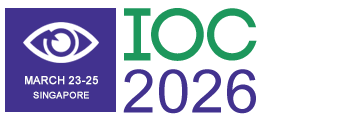Title : The Endogenous Endophthalmitis Vitrectomy Study (EEVS): A retrospective analysis
Abstract:
Purpose: To evaluate visual and clinical outcomes in patients with endogenous endophthalmitis (EnE) undergoing early pars plana vitrectomy (PPV) versus intravitreal antibiotics and biopsy alone (IOAB).
Methods: This retrospective study was conducted at a tertiary eye care center in North India. Records of patients diagnosed with EnE from January 2018 to June 2025 were reviewed. Inclusion criteria included clinical features of EnE with or without positive vitreous, blood, or urine cultures. 132 eyes were grouped into Group A (IOAB alone, n=48) and Group B (PPV with IOAB, n=84). Visual and clinical outcomes were analyzed.
Results: The mean symptom duration was 12.4 ±?15.5?days; mean follow-up was 22.6?±?4.5 months. Pseudomonas species (31.3%) were the most commonly identified organisms, followed by Aspergillus (15.6%). Repeat intravitreal injections were required in 66.7% of Group A versus 41.7% of Group B. Although not statistically significant, Group B showed better visual improvement, especially in eyes with poor initial VA (<20/200) and symptom duration ≤1 week—57% of whom improved to >20/60. In contrast, Group A showed limited recovery, with 80% of eyes remaining <20/200.
Conclusions: Early surgical intervention may enhance visual outcomes in endogenous endophthalmitis, particularly in cases with poor baseline vision and short symptom duration. While statistically insignificant, our findings parallel the EVS study, which demonstrated the visual benefit of PPV in postoperative endophthalmitis. To the best of our knowledge, this study represents the largest reported sample size of EnE cases to date. Larger, multicenter prospective studies are needed to establish standardized EVS-like treatment protocols for EnE.




